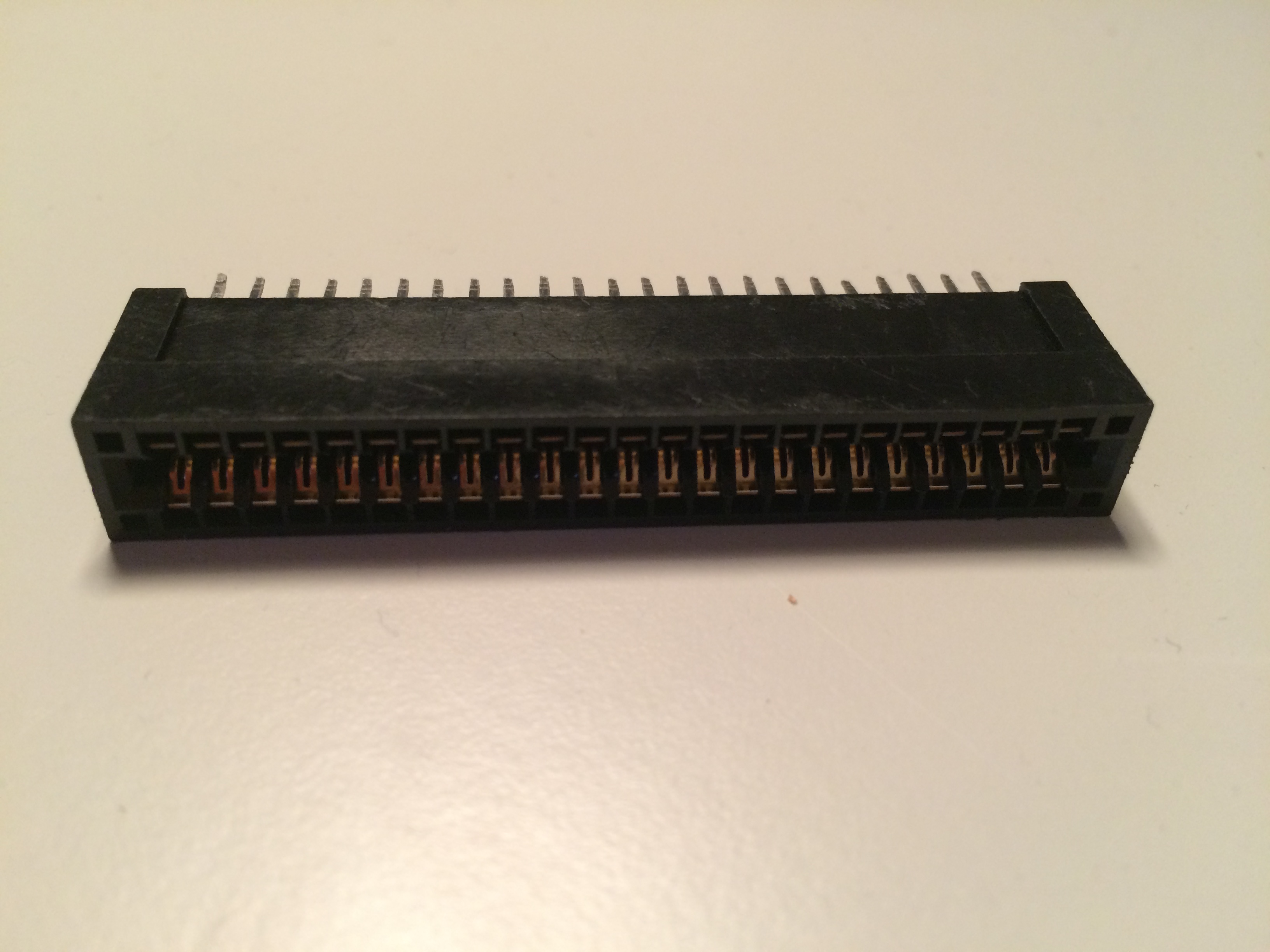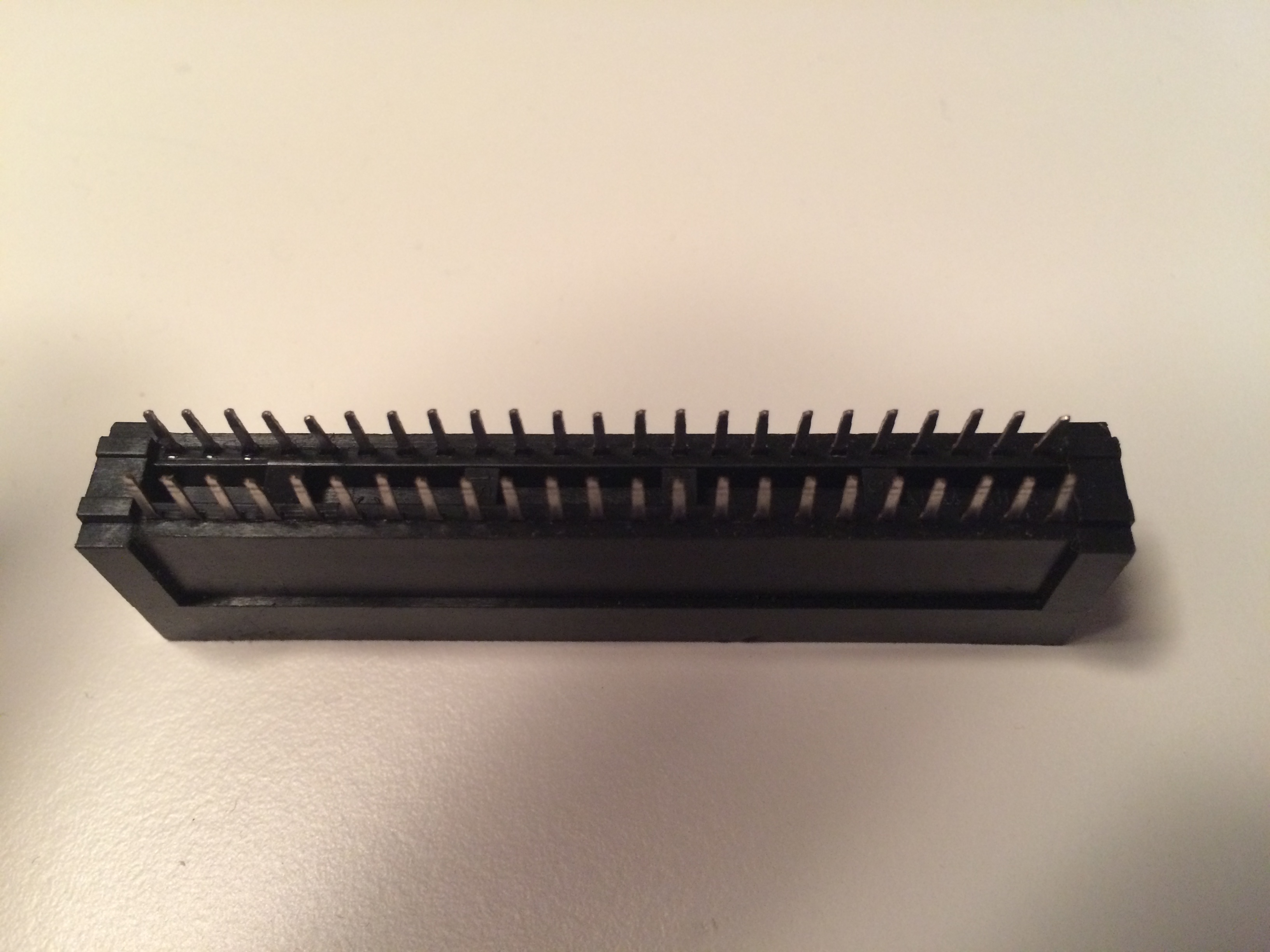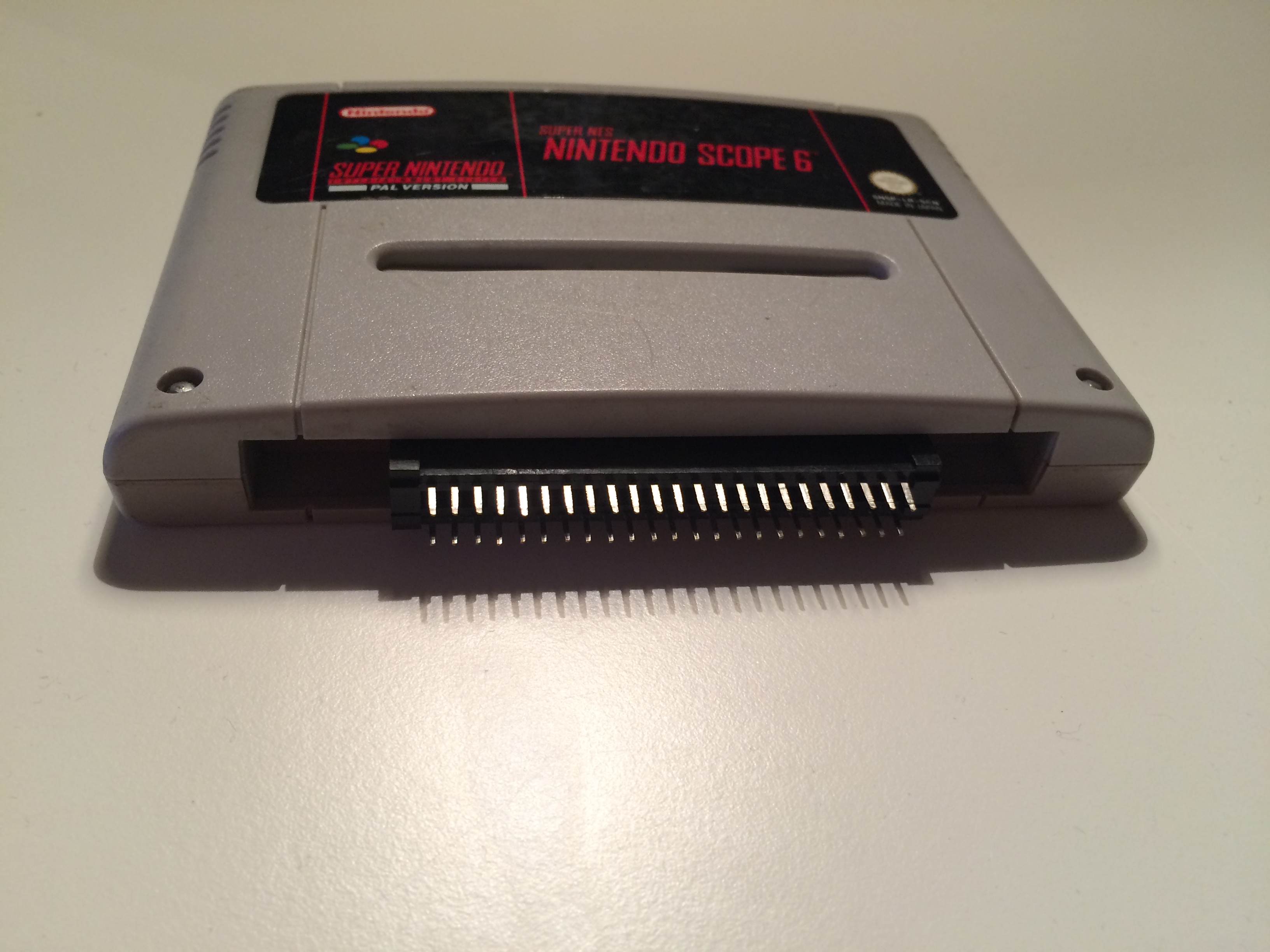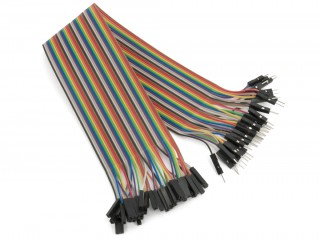Just wanted to give an update.
I managed to find an old “standard” edge connector with 2*23 pins (just like a SNES cartridge with no extension chips). I found it at the physical store Tema Elektronik here in Gothenburg. It is the only physical store that I know of that sells electronics stuff since ELFA closed (Kjell&co does have some stuff and they are super helpful, but still).
Here it is in all its glory:
When mounted on a game it looks like this:
I'm not sure if it is 2.54mm or 2.5mm, probably 2.54mm since that is the standard. The game seems to fit tightly though. The pins are a bit large but do fit in a breadboard BUT they are not seperated enough to be placed on opposite sides of the “ridge”, thus is will short circuit. I haven't found a nice solution here yet... My hope is to be able to use the individual pins of a cable such as
EDIT: This cable did not work. I got one and just looking at it I can see that the female end have too large holes. Seems that the pins on cables made for breadboards have quite large pins. Expect a future invective-filled post when I've soldered everything instead! I could go for clamp-based solution instead but f*ck it.
and use the females on the edge connector and the males on the breadboard. I do have everything I need to build cables myself, but I'll think I'll buy something this time. To be continued.
I also found some information on SNES Cartridges here. Especially this, this and this seems helpful. I will probably learn a lot from these.
Feels like I've taken a step forward somehow. I'm back at work after my parental leave and Rasmus has been giving me helpful tips on the electronics side so I feel that I should have something up and running. My biggest challenge is that the RaspberryPi model B+ only have 26 data pins (it has 40 in total, but only 26 that can be used as input/output). One can solder on 4 more somehow so that could be 30. The SNES OTOH uses 32-pins for adress (24-bit) and data (8-bit). Then I need some more pins to communicate.
Of the 46 snes pins I can disregard:
- 2 +5VDC
- 2 GND
- 4 CIC
- /CART will always be 1 for ROM extraction
- /RESET will probably always have one value
- CPU_CLOCK I might be abel to disregard
- Perhaps /RD can be ignored, don't know
- 24-bit adresses means 16MB cartridges. Most games are smaller. Perhaps I can make a compromise here.
So if I'm lucky I only need 34 pins which is larger than 30. But for now I can try to extract first 64kb or something and then move on from there. If I later want to emulate a cartridge and play it back in the SNES I must be 5V and work with all the 46 pins so I need to figure out how to do that with the Raspberry (or with something else!).
Stay tuned!



